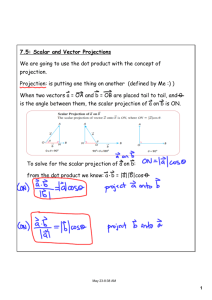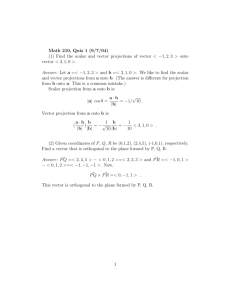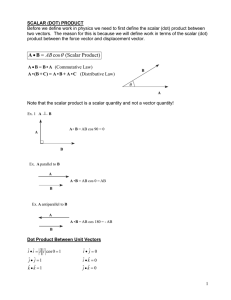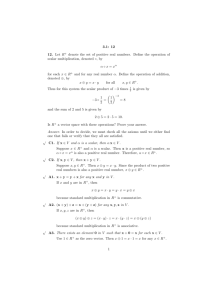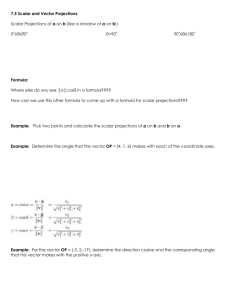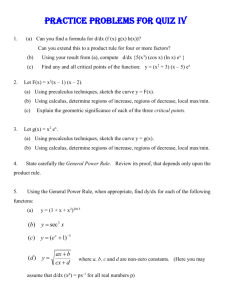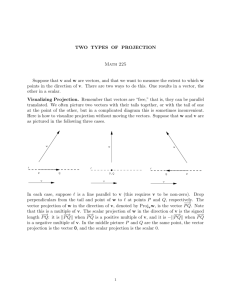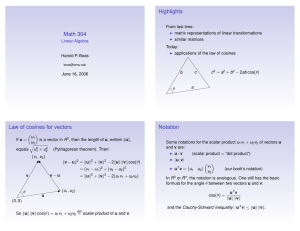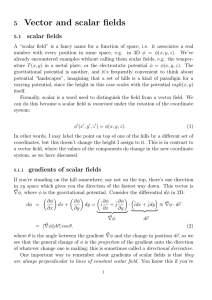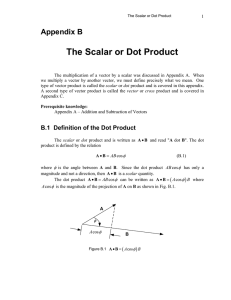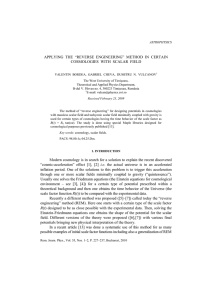File
advertisement
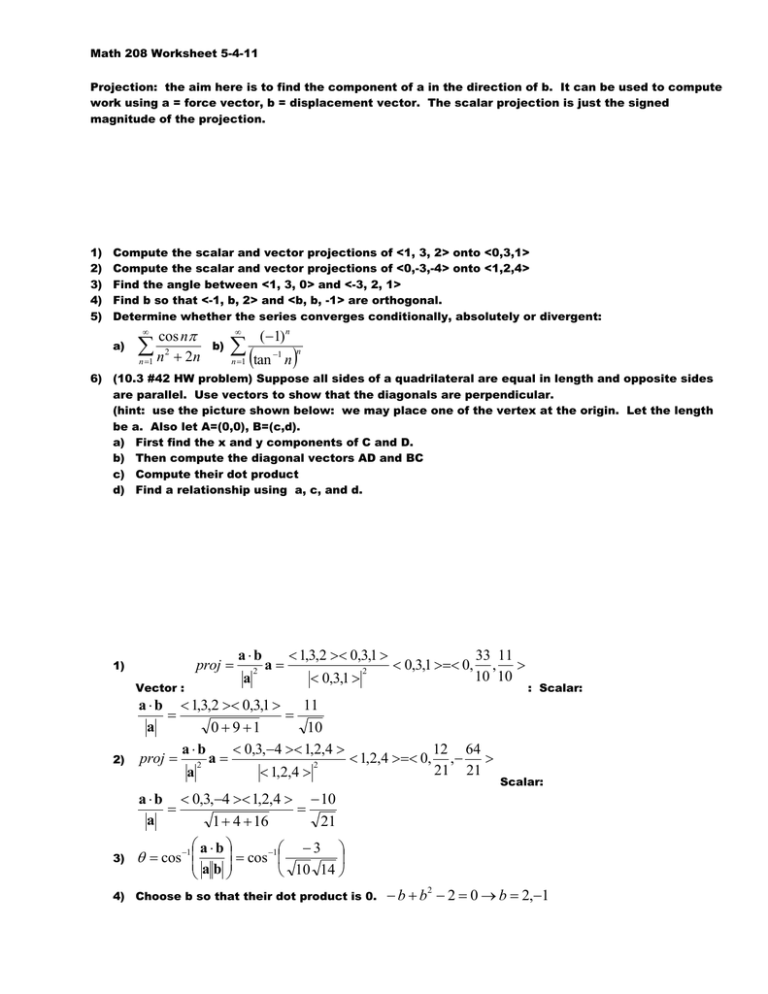
Math 208 Worksheet 5-4-11 Projection: the aim here is to find the component of a in the direction of b. It can be used to compute work using a = force vector, b = displacement vector. The scalar projection is just the signed magnitude of the projection. 1) 2) 3) 4) 5) Compute the scalar and vector projections of <1, 3, 2> onto <0,3,1> Compute the scalar and vector projections of <0,-3,-4> onto <1,2,4> Find the angle between <1, 3, 0> and <-3, 2, 1> Find b so that <-1, b, 2> and <b, b, -1> are orthogonal. Determine whether the series converges conditionally, absolutely or divergent: cos n 2 n 1 n 2n a) ( 1) n b) tan n 1 n 1 n 6) (10.3 #42 HW problem) Suppose all sides of a quadrilateral are equal in length and opposite sides are parallel. Use vectors to show that the diagonals are perpendicular. (hint: use the picture shown below: we may place one of the vertex at the origin. Let the length be a. Also let A=(0,0), B=(c,d). a) First find the x and y components of C and D. b) Then compute the diagonal vectors AD and BC c) Compute their dot product d) Find a relationship using a, c, and d. proj 1) a Vector : 2) ab 2 a 1,3,2 0,3,1 0,3,1 2 0,3,1 0, 33 11 , 10 10 a b 1,3,2 0,3,1 11 a 0 9 1 10 ab 0,3,4 1,2,4 12 64 proj 2 a 1,2,4 0, , 2 21 21 a 1,2,4 : Scalar: Scalar: a b 0,3,4 1,2,4 10 a 1 4 16 21 3) ab cos 1 3 10 14 ab cos 1 4) Choose b so that their dot product is 0. b b2 2 0 b 2,1 5) A) Absolute convergent by the comparison test since B) Absolute convergent by the comparison test since lim tan 1 n n 2 1.57 so it passes 1.5 after while. 1 1 1 2 2 2 n 2n n 2n 3n 3 tan 1 n for large n since , 2 Thus 2 1 tan n 1 n 2 n 3 3 2 1 n ,a convergent geometric series. 6) Since the length is a, D=(a,0), C=(c+a, d). Then AD=<c+a, d> and BC=<a-c, -d>. Their dot product is a c perpendicular. 2 2 d2. But this is 0 by the Pythagoran Theorem. Thus the diagonals are
